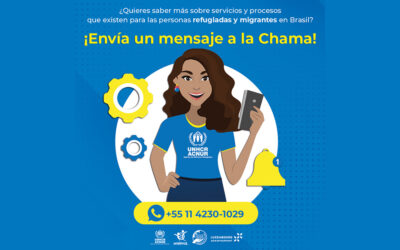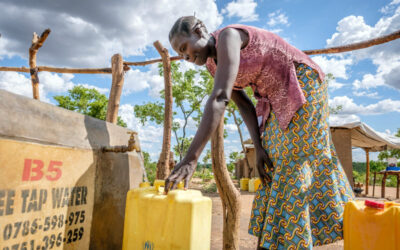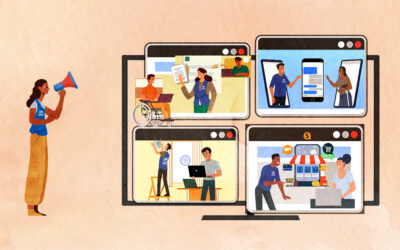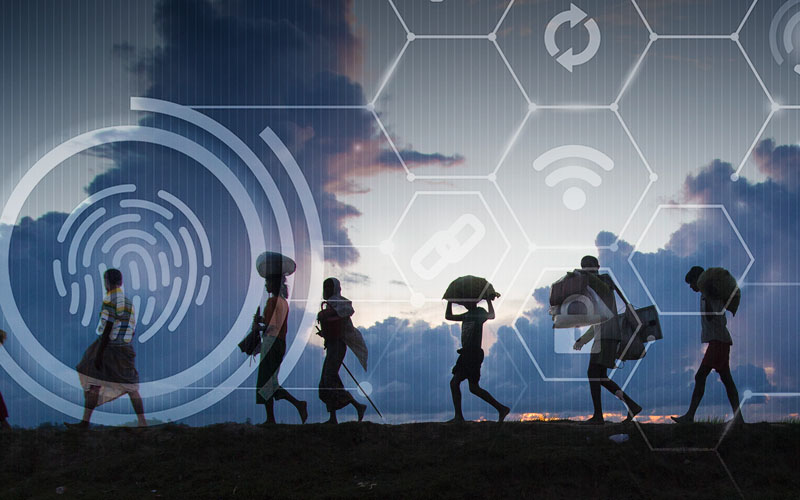
PRIORITY OUTCOME
DIGITAL
PROTECTION
Outcome
Communities can exercise their human rights online and are protected from digital risk, enabling them to have access to trusted channels, avoid harm and have agency in decision-making.
Photo credit: ©UNHCR/Roger Arnold
Current context
- The people we serve are increasingly connected and online, accessing digital content and services. Alongside these opportunities, they face new digital risks. These include online targeting of people on the move for exploitation, toxic online narratives and hate speech, false, inaccurate and deceptive information and threats to their right to privacy.
- UNHCR and partners are increasingly using digital channels to communicate with the people we serve. These channels are strengthening accountability to affected people and access to protection information and services.
- The digitalization of border control offers opportunities to increase access to asylum but can also put lives at risk and threaten protection. It is increasingly recognized that digital tools, including those developed and used by the private sector and governments, must respect the principles of the international protection framework.
- The United Nations and other standard-setting bodies are concentrating their attention on ethics and the protection of rights in the digital world. The application of ethical and international human rights standards also provides a guiding framework for UNHCR’s own use of digital technology.
- Host States, regional and global standard-setting bodies are establishing new legislative and regulatory frameworks to enable eGovernment and the digital economy, including crucial digital financial services. Protection safeguards for the communities we serve are required to enable their safe digital inclusion.
- The digitalization of host States’ civil registration and national identification systems often aim to close the identity gap, which currently leaves many undocumented citizens as well as forcibly displaced and stateless communities without the trusted identity credentials needed to access mainstream services.
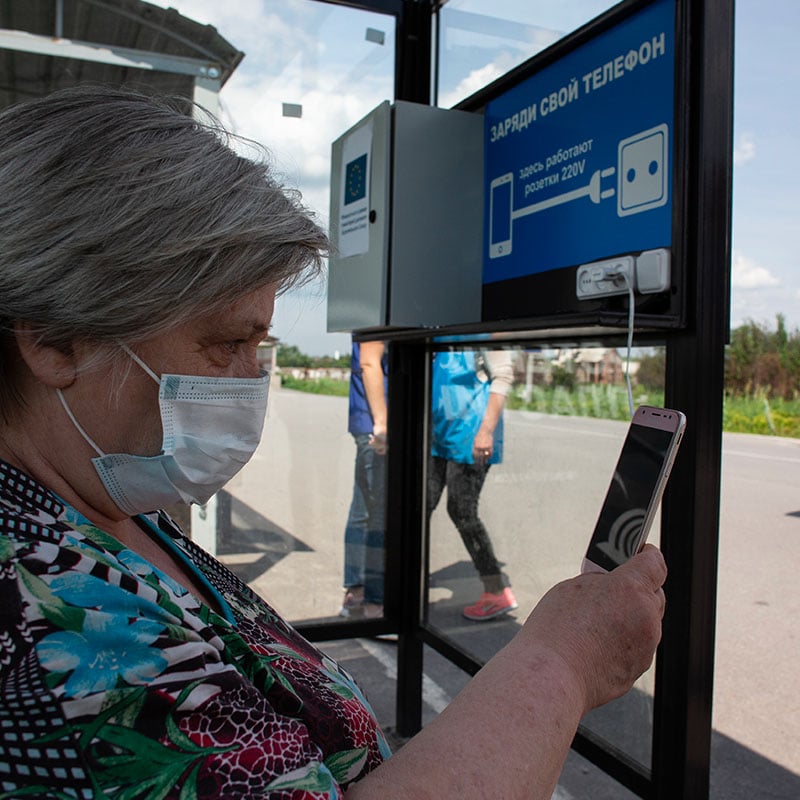
An internally displaced woman charges her mobile phone at a bus stop constructed by UNHCR and its partner NGO Proliska NGO at the Stanytsia Luhanska entry-exit crossing point between government territory and the area held by separatist rebels in eastern Ukraine. The bus stop is equipped with solar-powered electric sockets. . ©UNHCR/Pavlo Pakhomenko
Five-year results
By the end of 2026, UNHCR will have:
- Rolled out guidance and developed a toolkit for digitally engaging with forcibly displaced and stateless persons.
- Integrated secure two-way digital channels into UNHCR’s broader service delivery ecosystem.
- Undertaken information and communication needs assessments for key country operations and contexts to help avoid and address digital exclusion.
- Established legal and policy positions on the application of international protection principles in priority digital areas.
- Increased advocacy and strengthened partnerships with the private sector, including technology and social media companies, to address protection risks such as trafficking networks operating online and online hate speech and disinformation.
- Increased focused advocacy on other key digital protection issues including the increasing digitalization of border control and the use of surveillance technology.
- Strengthened the capacity of UNHCR and humanitarian partners in digital protection, with greater skills, tools and agile and accessible training in place.
- Provided technical advice with States, regulatory and standard-setting bodies on the application of protection principles for forcibly displaced and stateless persons, including safeguarding their right to privacy and the protection of their personal data.
- Continued to lead the coordination of humanitarian agencies in digital engagement with the communities we serve, under our protection mandate. This includes coordinating efforts to establish and strengthen collective digital feedback and response mechanisms.
Priority actions
- Address prioritized digital protection risks such as misinformation, disinformation and hate speech, through promoting the application of international protection principles with the private sector, increasing access to reliable online protection information for people on the move, and exploring opportunities to co-develop safe humanitarian digital spaces with the communities we serve.
- Complete further information and communication needs assessments in the field to support the design and development of digital solutions and avoid the risks of digital exclusion.
- Complete legal and policy research on thematic digital protection priorities, ranging from the protection impact of digitalization on access to asylum and the protection of refugees to the consequences for stateless communities.
- Roll out and further strengthen UNHCR’s existing guidance on managing digital risks and the use of social media in community-based protection.
- Develop and promote further practical guidance and tools on digital protection for UNHCR and partners’ staff; businesses, including technology companies; and States, regulators and standard-setting bodies.
- Put in place a capacity-building plan to support UNHCR personnel and partners to meet digital protection challenges.
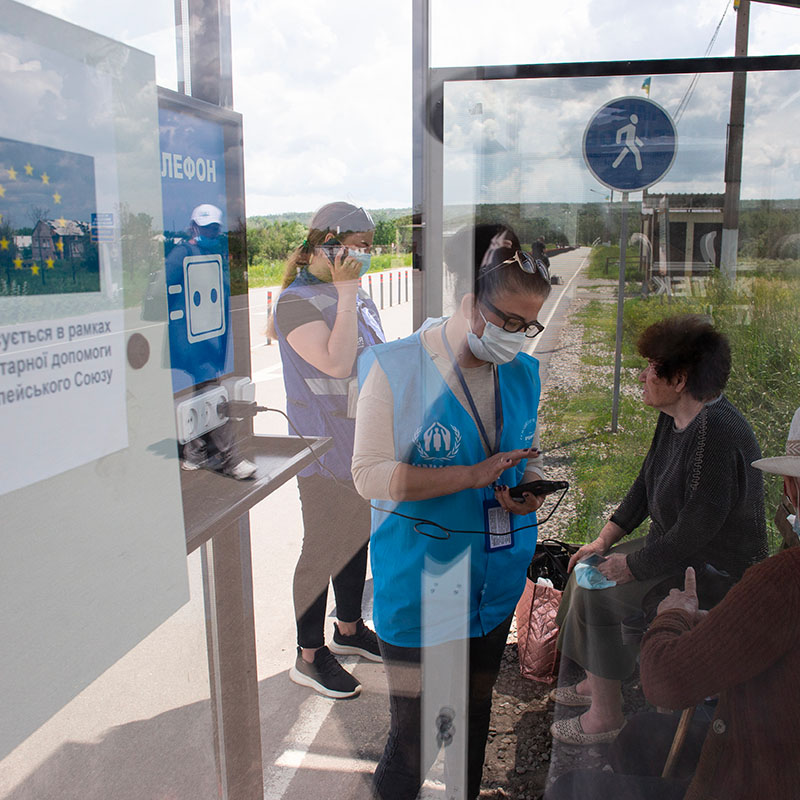
A mobile phone charging station constructed by UNHCR and its partner NGO Proliska NGO at the Stanytsia Luhanska entry-exit crossing point between government territory and the area held by separatist rebels in eastern Ukraine. The bus stop is equipped with solar-powered electric sockets. ©UNHCR/Pavlo Pakhomenko
The strategy in action
One message at a time, La Chama chatbot combats falsehoods
To reduce misinformation among Venezuelan refugees and migrants in Boa Vista, Brazil, UNHCR launched the La Chama chatbot in 2021.
Leveraging technology to ensure water provision in refugee camps
To better monitor and ensure the timely delivery of water supplies to refugee camps in Uganda, UNHCR set up a digital monitoring system to receive real-time data on how water was being delivered and consumed across the country.
Enabling innovation and experimentation through UNHCR’s Digital Innovation Fund
To stimulate innovative approaches to digital technologies, UNHCR’s Digital Innovation Fund provides UNHCR colleagues with the support they need to deliver forward-thinking initiatives on digital inclusion, digital protection, and digital services.

